Browse Houses
Search Results: Returned 5927 records. Displaying results 201 – 300
| House name | Description | |
|---|---|---|
| Ardmayle/Clonmore | Ardmayle House in the townland of Clonmore North is marked on the first Ordnance Survey map. The Prices were resident here from at least the 1770s ad Wilson mentions it as the seat of Mr. Price in the 1780s. "Ardmoyle", Cashel, was the residence of Thomas Price in 1814 and in 1837. Richard Price was the occupant in 1850 holding the house valued at £21.17 shillings from John Hyde. The National Inventory of Architectural Heritage states that the present house dates from circa 1870s and was formerly the wing of an 18th century house demolished in 1951. Louis H. Grubb occupied at house at Clonmore North in 1906 valued at £56. This house is now known as Clonmore. |
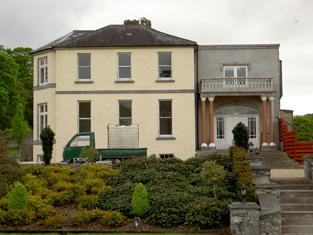
|
| Ardmore (Dunamon) | In 1786 Wilson refers to Ardmore as the seat of Mr. Croaghan. By the 1830s an extensive demesne is shown in the area but no house is visible. The townland is in the possession of St. George Caulfield of Dunamon by the time of Griffith's Valuation. | |
| Ardmore House | Richard Roberts held this property in fee at the time of Griffith's Valuation, when it was valued at £55. Lewis refers to is as the seat of J. Roberts in 1837. In 1943 the Irish Tourist Association Survey mentions it as the birthplace of Lieutenant Richard Roberts, Master of the ship, Sirius, the first steamship to cross the Atlantic. Ardmore is still extant and occupied. | |
| Ardmore or Monea House | Simon Bagge was leasing this property from the Ecclesiastical Commissioners in 1851 when it was valued at £33. It is labelled as Ardmore House on the 1st edition Ordnance Survey map and as Monea House on the later 25-inch edition. The ITA survey indicates that it was sold by John Leonard Bagge in 1921 and subsequently became an Irish college. | |
| Ardmullan | Built post 1838 and described as a steward's house at the time of Griffith's Valuation when it was occupied by Thomas Pim junior who held it in fee. A mansion valued at £23 was still in the possession of Thomas Pim in 1906. The house no longer exists but some of the yard buildings remain. |

|
| Ardnacrow House | Though buildings existed at this site in the 1830s Ardnacrow House is only labelled on the later 25-inch Ordnance Survey map of the 1890s. At the time of Griffith's Valuation, Winthrop Sealy held this property in fee when it was valued at £29. The original house is now ruined and a modern house has been constructed nearby. | |
| Ardnagashel House | Samuel Hutchins held this property in fee in 1852 when it was valued at almost £23. Lewis noted it as the seat of A. Hutchins in 1837. In 1906 it was owned by Samuel N. Hutchins and valued at £30. The original house has been demolished and the stableyard converted to self-catering accommodation. The Irish Tourist Association survey of the 1940s mentions that the grounds contained some fine trees including a cork tree which came originally from Kew Gardens. |
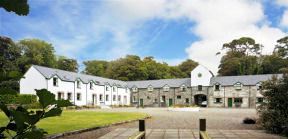
|
| Ardnageeha | Hajba writes that this house was built by Daniel McCartie, a Commissioner of Tithes for the parishes of Cullen and Drishane. The house valued at £12.10 shillings was occupied by his wife Anne McCartie at the time of Griffith's Valuation. The property was held from the Earl of Egmont. Daniel's only child Mary married John Maurice O'Connell, a grandson of Daniel O'Connell. The O'Connell lived at Ardnageeha until 1890 when they moved to Derragh House. The house is still extant though possibly not occupied. |

|
| Ardnaglass | Wilson, writing in 1786, refers to Ardnaglass as the seat of Mr. Jones, "half a mile beyond the ruins of a castle". The castle he refers to is Ardnaglass Castle, also associated with the Jones family. Earlier, in 1739, Reverend William Henry mentions Ardnaglass as the seat of Loftus Jones. By the time of Griffith's Valuation, this townland was part of the Webber estate, leased by William Graham. He was occupying a property valued at £4. The castle ruins are still extant. | |
| Ardnagragh | Alicia Nugent was leasing this property, which included a mill, from the Digby estate at the time of Griffiths Valuation in the early 1850s, when it was valued at £23. The National Inventory of Architectural Heritage indicates that the house is still in use though the mill has been demolished. | |
| Ardnamona | This house was built after the publication of the 1st edition Ordnance Survey map. By the time of Griffiths Valuation in the 1850s, the house here was valued at £13 and was being leased by Richard Thompson from George "Rea". Local sources suggest, however, that Thomas Brooke was the owner of the land but that the house was built by George Wray. In 1837, Lewis refers to Ardnamona as "the romantic and picturesque place", property of G.C. Wray. By 1906 Ardnamona had been purchased by A.R. Wallace and the house was valued at over £29. The Wallace family extended and enhanced the gardens at the property. Ardnamona is still extant and occupied. |
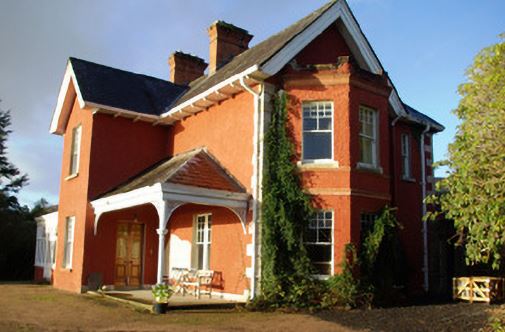
|
| Ardnaree Cottage | Ardnaree Cottage dates to at least the early eighteenth century and possibly earlier. It was part of the Gore estate. Wilson, writing in 1786, refers to "Mr. Jones' charming demesne". In 1837 it was the residence of Thomas Jones and in 1857 it was leased by Col Arthur Knox Gore to Anne Hearne when it was valued at £10. The National Inventory of Architectural Heritage notes it as an important component of the domestic built heritage of Ballina. It is still extant and well-maintained. |

|
| Ardnaree Rectory | At the time of Griffith's Valuation Rev. Joseph Verscoyle was occupying the house at Glebe, parish of Kilmoremoy, valued at £30. This house is no longer extant. | |
| Ardocheasty | John B. Wallace was leasing this house from the Carew estate in 1851 when it was valued at £12 5s. Farm buildings are extant at the site. | |
| Ardogeena House | At the time of Griffith's Valuation, Richard T. Evanson was leasing this property to Florence McCarthy when it was valued at £10. In 1837, Lewis noted the house as the seat of R.T. Evanson. It is still extant and occupied. |

|
| Ardoginna House | Leased by Sir Joseph Neale McKenna from the estate of the Duc deCastres until its sale in 1864, when it was bought by McKenna. Formerly a residence of the Coghlan family. Eliza, a daughter of this Coghlan family, married the Duc deCastres. Ardoginna was owned by the McKenna family until the early twentieth century. It was briefly used as an Irish college before the purchase of Monea House for that purpose. Brady notes that it is now a ruin. In the 1780s, both Taylor and Skinner and Wilson had noted a house called Grey Rock as a residence of the Coghlan family in this area. |
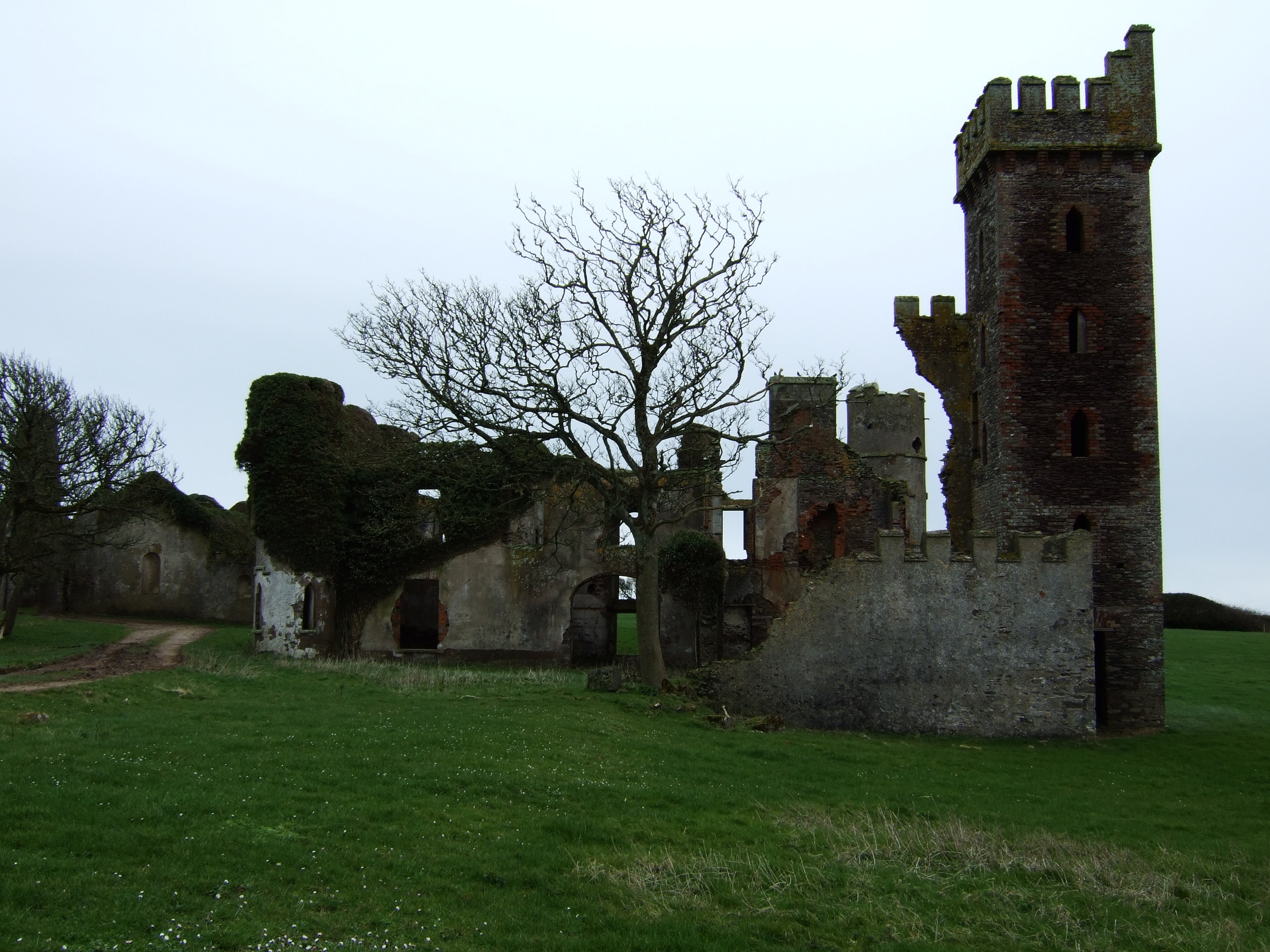
|
| Ardpaddin | Mary Mulcahy was leasing this property from the Earl of Stradbroke's estate in 1850, when it was valued at £10. A substantial farm is still extant at the site. | |
| Ardrum | The seat of the Colthurst family, baronets, valued at £85 in the mid 19th century. The Colthursts moved from here to Blarney in the 1870s. However Sir George St John Colthurst is still given as the occupier in 1906 when the house was valued at £45. In 1944 the Irish Tourist Association survey noted it as originally the seat of the Colthursts and still owned by the family. The house is now demolished. | |
| Ardrumman House | Francis Mansfield was leasing this property from Thomas Patterson at the time of Griffiths Valuation in the 1850s, when it was valued at £40. The National Inventory of Architectural Heritage suggests that the house was built c.1840. It is still extant. | |
| Ards | Wilson referred to Ards as the seat of Mr. Wray in 1786. Lewis recorded Ards as the seat of A. Stewart in 1837. At the time of Griffith’s Valuation it was occupied by Alexander Stewart when the buildings were valued at £100. In 1906 Ena D. Stewart was the owner when the house was valued at £90. Local sources suggest Ards remained in the Stewart family until 1927 when it was taken over by the Irish Land Commission. The house was later acquired by the Capuchin Order. A serious fire in the 1940s led to the demolition of the old house and a new friary was built some distance away. The demesne is now known as Ards Forest Park and is in the care of Coillte, the Irish forestry service. | |
| Ardsallagh | The home of George Gough in the first half of the 19th century. It is described in the Ordnance Survey Name Books in 1840 as "a gentleman's residence with garden's attached and surrounded with ornamental grounds". It was valued at £37.12 shillings in 1850 and held from George Fennel. In the 1870s Colonel George Frend of Ardsullagh owned 100 acres in county Tipperary. Still in use as a country house. |

|
| Ardsallagh House | Mrs.Olivia Ronayne was leasing this property from the estate of Lord Stuart de Decies at the time of Griffith's Valuation, when it was valued at £10 10s. It is labelled Ardsallagh House on both the 6-inch and 25-inch Ordnance Survey maps. Extant buildings remain at the site. | |
| Ardskeabeg | A property in the possession of the trustees of Dominick Skerrett at the time of Griffith's Valuation. Occupied by the Kelly family in the later 19th century and by their descendants the Canavans until 2000. The house is still extant but no longer lived in. |

|
| Ardskeamore | The original house was occupied by the Brownes in the 1830s. Charles Kelly was leasing from James Browne in the 1850s when the valuation of the house was £10. By the 1890s this had been replaced by the existing house (M437420) which was renovated in 2006. | |
| Ardtermon Castle | Ardtermon was the first property held by the Gore family before the building of Lissadell. McTernan notes that it was granted to Sir Francis Gore and had previously been the property of the O'Hart family. The Gore Booth family moved to Lissadell in the mid eighteenth century. Since 1979 it has been the home of the Schiller family who have restored it to its former glory from total ruin. See www.ardtarmoncastle.com |

|
| Ardtully House | Richard J.T. Orpen was leasing Ardtully House from John Croker at the time of Griffith's Valuation, when it was valued at £23 5s. In 1814 Leet records it as the seat of Richard O. Townsend while Lewis, in 1837 mentions Ardtully as "the ancient mansion of Richard Orpen Townsend". It was also the seat of the Orpen family in the 1770s and 1780s. Bary states that this property included an earlier castle, which was originally part of the McFineen McCarthy lands forfeited in the seventeenth century. It was granted by the Hollow Blade Company to the Conways but, later in the eighteenth century, the Orpens were occupying the house, subsequently replaced in the nineteenth century. Recorded, perhaps mistakenly, as the seat of R.H.M. Orpen and Sir. R.J.T Orpenm in 1894, in 1906 it was owned by Richard H.M. Orpen and valued at £40. The Scottish-baronial style house was burnt in 1921 but the ruins remain. |

|
| Ardue House | Ardue House was the home of the Clemengers, a family of German origin, throughout the 19th century. Mr Clemenger was resident in 1814 and Alexander Clemenger in the 1850s when the house was valued at £13 and held from James H. Story. Henry Taunt Clemenger and his unmarried son John James were resident in 1911. The house was located between Killywilly Lough and Tomkinroad Lough. The site is now a green field. | |
| Ardue House | Ardue House was the home of the Clemengers, a family of German origin, throughout the 19th century. Mr Clemenger was resident in 1814 and Alexander Clemenger in the 1850s when the house was valued at £13 and held from James H. Story. Henry Taunt Clemenger and his unmarried son John James were resident in 1911. The house was located between Killywilly Lough and Tomkinroad Lough. The site is now a green field. | |
| Ardvarna | Occupied by A. Ross in 1837, John Scully at the time of Griffith's Valuation when it was valued at £16 and by Edward Jackson Fitzsimons in the 1860s. There is still an extant house at this site. |
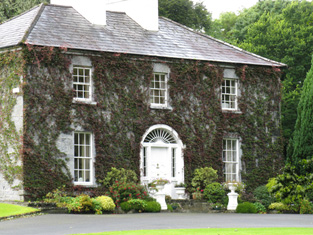
|
| Ardvarnock Lower | ||
| Arley Cottage | A graphic of Arley Cottage ‘belonging to Colonel Barry’ in the National Library is dated circa 1820s, see http://catalogue.nli.ie/Record/vtls000550550. The Farnham Papers also refer to Arley Cottage in 1822. Lewis records Arley as the property of Lord Farnham and it was occupied by the Hon Somerset Maxwell in the mid-1840s and by the Hon Richard Maxwell in the mid-1850s when it had a rateable valuation of £20. The Hon. Henry Maxwell was the occupier in 1906. This building is no longer extant. | |
| Arlinstown House | James Gillman was leasing Arlinstown House to Thomas Richardson Leane at the time of Griffith's Valuation, when it was valued at £15. A house and extensive farm buildings are extant at this site now. | |
| Arm Lodge | William Lloyd was leasing a property valued at £8 to Laurence Henry at Arm, barony of Castlereagh, at the time of Griffith's Valuation. Lewis records this property as Arm Lodge, a seat of W. Lloyd in 1837. In 1814 Arm Lodge was the residence of Mr. John Cotton and in the 1870s of William Garnett. A house is still extant at the site. | |
| Arnasbrack | Nicholson Ormsby Fury was leasing a house valued at £5 from the Cooper estate at the time of Griffith;s Valuation. McTernan states that it was the modern seat of the Fury family of nearby Castle Fury. In the early twentieth century the family sold their interest in the property. The house is still extant and occupied. | |
| Arnmore | A building located at this site as marked on the first edition six inch Ordnance Survey map (publ. 1837) was expanded before Griffith’s Valuation. The buildings were in the mid-19th century valued at £38.10.0. and the house, known as Arnmore, was occupied by William A. Moore and held from Earl Annesley. William Armitage Moore of Arnmore was an executor to the will of his nephew, the 4th Earl Annesley, who died in 1874. In 1906, this property was in the possession of Lord Farnham. Today it is the club house of the County Cavan Golf Club. | |
| Arranhill | Arranhill was a Stoney home in the late 18th century. Thomas Stoney was resident in 1814 and Thomas George Stoney in 1837. In 1840 the Ordnance Survey Name Books report that "it suffered considerable damage during the storm of 6 and 7 January, 1839. It is occupied at present by Mr. Skelly, land steward to George Walpole, Brusna Mills, Roscrea". The Name Books also note the Marquis of Ormond as the proprietor. Thomas G. Stoney was the occupier in the early 1850s holding the property from the representatives of T.P. Firman. The buildings were valued at £23.10 shillings. This house is described as "in ruins" on the 25-inch Ordnance Survey map of the 1890s and some of these ruins remain. | |
| Ash Hill House | The Ordnance Survey Name Books record Ash Hill House, parish of Ballymacelligott, as being a ruin, c.15ft high in the 1830s. It had been built by the Blennerhassetts around 1700 and was later occupied by the Eager family. In 1786 Wilson records Ash-Hill as the seat of Thomas Blennerhasset. | |
| Ash Hill Towers | The residence of a branch of the Coote family in the 18th century, possibly held from the Barons Carbery. Ash Hill is referred to by Wilson as the seat of Chudleigh Coote in 1786. Bought by Eyre Evans from Chidley Coote in 1794 (see sale rental 6 July 1878). Eyre Evans held the property in fee throughout the first half of the 19th century. The Ordnance Survey Field Name Book describes this house as having "a most superb new front with towers at each end". At the time of Griffith's Valuation the buildings were valued at £50. Bence Jones writes that Ash Hill Towers became the residence of John Henry Weldon in the later 19th century. The Irish Tourist Association surveyor wrote in 1943 that the property was owned by Captain P.M. Lindsay, nephew of John H. Weldon, who bought the house from the Evans family in 1880. Still extant, this house is the centre of a stud. |
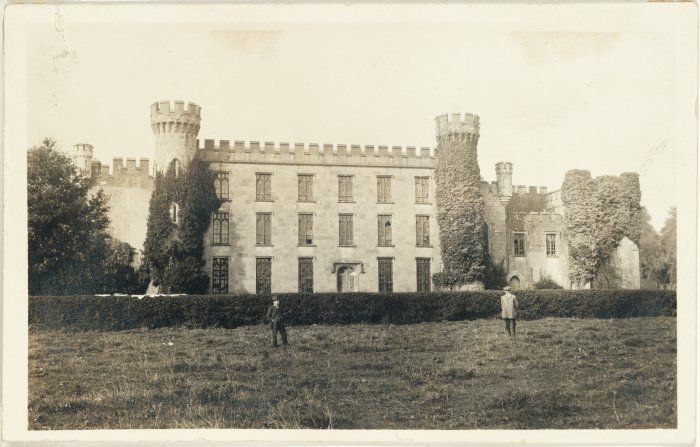
|
| Ash Park | Ash Park or Park was the home of the Butler family in the 18th and 19th centuries. Occupied by James Butler in 1814 and 1837 and by Captain James Butler at the time of Griffith's Valuation. The buildings were valued at £35+ and held in fee. This house no longer exists. | |
| Ashborough | Lewis records Daniel D. Power as resident at Ash Grove in the parish of Ballingarry in 1837. Held Daniel D. Power at the time of Griffith's Valuation and valued at £16 and in his occupation at the time of the 1854 sale. An old outbuilding remains at the location of this house. |
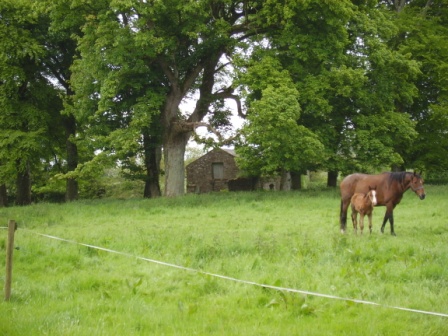
|
| Ashbourne | A 2 storey house located on the Earl of Limerick's estate, this house was the seat of the Honourable Robert O'Brien in the 1830s. It was occupied by Richard Wilson in the early 1850s and held from Eliza Harvey. Garrett Hugh Fitzgerald's interest in the property was advertised for sale in May 1851. By the 1870s it was the home of the Synan family. This house is now demolished. | |
| Ashbourne (Clonmel) | In 1850 William Davis was leasing this property from Abraham Grubb when it was valued at almost £36. The National Inventory of Architectural Heritage indicates it was designed by William Tinsley for the Davis family. It is still extant and occupied. |
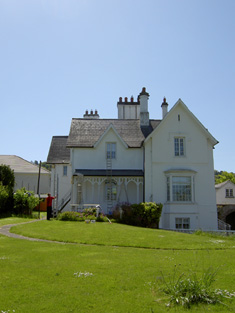
|
| Ashbourne House | In 1851 Edmond Foley was leasing this property from the Devonshire estate when it was valued at £21 10s. It is labelled Ashbourne House on the later 25-inch Ordnance Survey Map. | |
| Ashbrook | In June 1854 William Kelly was recorded as the owner of the property at Ashbrook, formerly Bouilagh, parish of Killaan, barony of Kilconnell. At the time of Griffith's Valuation the house at Ashbrook, valued at £20, was the residence of Charles B. Lynch. It is no longer extant. | |
| Ashbrook | An early 18th century house, it was noted by Wilson as the seat of Mr. Moore in 1786. It was occupied by Michael Costello in 1814 and described as in a dilapidated state at the time of the first Ordnance Survey. The Irish Tourist Association file refers to a two-storey plain featured house with the ruins of a small private chapel closeby, which apparently fell into decay in the early 19th century. Some ruins remain at the site. | |
| Ashbury | Ashbury, a house valued at £12 in the mid 19th century, was the residence of Timothy Bridge. Members of the Bridge family held the townland from the Earl of Portarlington at this time. The Irish Times reported, in February 1869, that Frederick Bridge had sold lands in the barony of Ikerrin to Rev. Dean Wolseley for over £2000. In the 1870s Edward and Timothy Bridge both of Ashbury owned 191 and 143 acres respectively in county Tipperary. | |
| Ashfield | At the time of Griffith's Valuation held by John Kelly in fee when the house was valued at £8. A building still exists at the site. | |
| Ashfield | This house located on the Barrett-Lennard estate is marked on the 1st edition 6 inch Ordnance Survey map. James G. Smyth of Ashfield, Clones, was a subscriber to Lewis ‘Topographical Dictionary’ in the 1830s. Valued at £10 Jane Smith was the occupier at the time of Griffith’s Valuation. A house is still located at this site. | |
| Ashfield (Tiaquin) | IN 1786, Wilson refers to Ashfield as the seat of Mr. Blakeney. On the 1st edition Ordnance Survey map a tree-lined avenue and buildings are shown but not named. None of the buildings are visible today though a portion of the avenue remains. | |
| Ashfield House | Occupied by John William Anderson in 1837 and by Denis Downing in the early 1850s who held the property from John Hyde. It was valued at £25. In 1942 the Irish Tourist Association Survey indicated that it was then the residence of William Bowden. This house is still occupied. | |
| Ashfield House | The house at Ashfield seems to have been known as Clooneene, particularly when it was the home of the Blake Forster family. In 1814 it was the home of Francis Blake Forster but by 1837 Lewis records it as in the ownership of D. McNevin. Earlier, in 1786, Wilson wrote that it was the seat of Mr. Forster. Ashfield House is demolished but substantial parts of the walled garden and the gate lodge are still extant. |

|
| Ashfield House | Ashfield House was a Persse property. Woodrangers' and workmens' cottages as well as 298 acres constituted this part of the estate. At the time of Griffith's Valuation it was valued at £3. By 1906 it was the property of Capt. A. Persse and was valued at almost £5. |

|
| Ashfield Lodge | Described by Bence Jones as a late Georgian house, now demolished. The house faced north west and looked onto the Dromore River. It was the home of a branch of the Clements family until 1952 when sold. Colonel Henry Theophilus Clements was the occupant in the mid-19th century holding the property in fee. The house was valued at £44 for rates. | |
| Ashford Castle | Originally a shooting lodge, in the style of a French chateux, built on the shore of Lough Corrib by the Browne family of Castlemagarret and occupied in the late 18th century by a branch of that family. Thomas Elwood was agent for the Brownes in the early 19th century and is recorded as the occupier in 1814. Sold after the Famine to Benjamin Guinness. His son Arthur Lord Ardilaun expanded the building in the style of a Gothic castle. Sold by the Guinness family in 1939 the castle now functions as a world famous hotel. |

|
| Ashford Old House | At the time of Griffith's Valuation Joseph Sharpe was leasing a property from Dudley Persse, at Ashford, barony of Moycarn. It was accompanied by 350 acres and was valued at £5. In 1814 Leet records Ashford as the residence of John Maher. The 6" and 25"edition OS maps record this as "Ashford Old House". | |
| Ashfort House | The home of John Lawder in 1814. Occupied by Hubert K. Waldron in 1837. At the time of Griffith's Valuation occupied by John Hamilton and held from Thomas Goff. Farm buildings exist at the site now. There was a second smaller house known as Ashfort Vale in the same demesne grounds. It is no longer extant. | |
| Ashgrove | Lewis records B. Talbot as resident. In 1840 the Ordnance Survey Name Books record that the house derived its name from "a large ash grove, recently cut away". A house valued at £15+ at the time of Griffith's Valuation when it was occupied by Reverend Benjamin Talbot and held from Sir John Power. Reverend Benjamin was still resident in the 1870s. Ash Grove is still extant. |
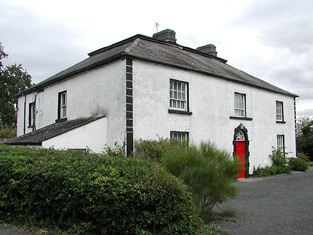
|
| Ashgrove | In 1786 Wilson refers to Ashgrove as the seat of Mr. Ash. At the time of Griffith's Valuation Ashgrove House was valued at £14.10 shillings and occupied by John Henry Ashe who held it from his brother Trevor Lloyd Ashe. A lithograph of Ashgrove is included in the Ashe sale rental of 1854. It was bought by Charles Moore of Mooresfort. Ashgrove was offered for sale again in 1864. It was held on a lease dated 1815 from Trevor Lloyd Ashe to Southwell Moore for 3 lives renewable for ever. Lyons writes that Southwell Mulcahy was resident from 1858. This house is still in use as a residence. |

|
| Ashgrove | The National Inventory of Architectural Heritage refers to this house as ‘a classic Palladian composition’ dating from the mid-18th century. Ashgrove was occupied by John Baker in 1814 who probably gave his name to the nearby Bakers Bridge. By the mid-19th century it was the home of Robert Battersby who held the property in fee. The buildings had a rateable valuation of £20. Ashgrove was the home of Miss Mary Jane Sheridan in 1901 and in 1911. In 1906, it was described as a mansion house with a rateable valuation of £23.10.0. It continues to be a residence. | |
| Ashgrove | Ashgrove was the home of the Upton family in the 18th century. Occupied by John Upton in 1814 and J.W. Upton in 1837. This house was being used as an Auxiliary Workhouse at the time of Griffith's Valuation. William Stephenson held the townland at this time. His interest was advertised for sale in June 1854. The tenant was Mr Denis Moylan who held on a 7 year lease from May 1852. A house is still extant at this site. | |
| Ashgrove | A branch of the Rogers family was located at Ashgrove in the early 18th century. Described by Bence Jones as a late Georgian house built for Councillor Franklin by Abraham Hargrave and now a ruin. In 1810 Townsend referred to the new house of Richard Frankland "built in the best modern style". It was occupied in 1814 by Mrs Franklan and in 1837 by R. Frankland. Richard Frankland held the property in fee at the time of Griffith's Valuation when the buildings were valued at £32. |

|
| Ashgrove | A home of the Ashe family from at least the 1770s this house was held by Richard Ashe from the Court of Chancery at the time of Griffith's Valuation and was valued at £13.10 shillings. He is also recorded as resident in 1814 and 1837. The sale rental of 1850 records that the house had lately been in the possession of Jeremiah Twomey. This house was owned by Captain Thomas Leader in the 1870s. In 1872 Robert Warren, a younger brother of Sir Augustus Warren, married Blanche Louise, daughter of Captain Leader. Robert Warren, with an address at Ashgrove, Macroom, is also recorded as a county Cork landowner in the 1870s. It is no longer extant though a small number of ruins remain. | |
| Ashgrove Mill | John Busteed and Arthur Rowan were the lessors of a house and mill at Tonreagh, vacant at the time of Griffith's Valuation, when the complex was valued at £25 15s. | |
| Ashleypark | Ashleypark was occupied by the Heads from at least the 1770s. It was the home of John Head in 1814. It became the seat of a branch of the Atkinson family when purchased by George Guy Atkinson in 1824. G. Atkinson was the proprietor in 1837. George Atkinson held the property in fee at the time of Griffith's Valuation when the buildings were valued at £23.10 shillings. Thomas Biggs of the Bellevue family married Alice Margery Atkinson in 1903. The house was valued at £35 and occupied by Thomas B. Biggs Atkinson in 1906. His niece Zelie Biggs eventually inherited Ashleypark. The house was sold to Sean and Nora Mounsey in 1983. It now functions as a guest house. |

|
| Ashline Park | Robert Mahon son of Charles of Corbally and his wife Rebecca Crowe lived here in the mid 19th century. Griffith's Valuation shows the house valued at £18 and that it was held from the representatives of Michael Finucane. In the 20th century the house was the residence of the Catholic Bishop of Killaloe for some time. Weir writes that it was demolished circa 1968. | |
| Ashpark | In 1786 Wilson refers to Ashpark as the seat of Matthew Lyster. By the time of Griffith's Valuation this townland was in the possession of Christopher Hamilton and the most substantial house, valued at £4, was leased from his estate by Patrick Finner. Very little of the buildings are visible on the 25-inch Ordnance Survey map of the 1890s though farm buildings still exist at the site. | |
| Ashroe | The Ordnance Survey Name Books record the building of Ashroe House in 1770 for £850. The residence of the Evans family in the late 18th and 19th century, held from Sir Matthew Barrington at the time of Griffith's Valuation, when it was valued at £23+. Wilson mentions it as the seat of Mr. Evans in 1786. The National Inventory of Architectural Heritage suggests modifications were made to the house during the nineteenth century. It is still extant and well-maintained. |

|
| Ashton | A house occupied by John Cotter from at least 1814 until his death in 1864 and by Mrs Catherine Cotter until at least 1871. It is not clear if John Cotter was a member of the Cotter family, baronets. The house is now part of the Ashton School complex. | |
| Ashton Grove | This house is marked Ashton Grove on the first Ordnance Surve map. John Cotter was the proprietor of Ashton, Cork, in 1814 and T. Cleary of Ballingohig in 1837. Thomas J. Cleary held the property from Henry Braddell at the time of Griffith's Valuation when the buildings were valued at £22. Cleary held a cornmill from Braddell in the townland of Kilrussane. James Fitzgerald held 122 acres of untenanted land and buildings valued at £26+ in 1906. |
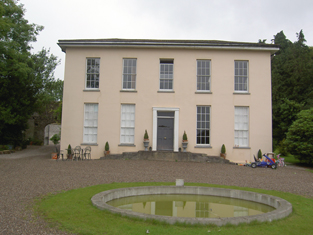
|
| Ashvale | This house was built in the mid-19th century, after the surveying for the first edition 6 inch Ordnance Survey map and before Griffith’s Valuation, when it was valued at £10 and occupied by James Bradshaw who held it from Robert Ellis. A building is still located at this site. | |
| Assolas | Built by the Reverend Francis Gore (died 1748) in the early 18th century and occupied by Philip Oliver circa 1750. This house was the home of the Wrixon family from 1774. Occupied by William Harris in 1814 and by Sir William Wrixon Becher in 1837. Richard Smith was resident in the mid 19th century, holding the property then valued at £25+ from Sir William W. Beecher. Owned and run as a guest house by the Bourke family until 2005. In 2022 it was offered for sale. |

|
| Athassel | James Scully was occupying this house at the time of Griffith's Valuation. He held it from Richard Creagh and the buildings were valued at £30. This house is still a residence. |
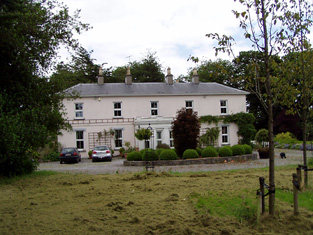
|
| Athasselabbey | A house occupied by William Dalton and held from Francis Green in the mid 19th century. The house was valued at £12+. It is still occupied. |

|
| Athavallie | The house at Moat was the main residence of the Lynch Blosses in the 18th and the early 19th century. In 1786 Wilson refers to Moat, the seat of Sir Henry L. Blosse. A fire destroyed the original house in 1808. It was rebuilt and is marked on the first Ordnance Survey map as Attavally. The Lynch Blosse family were absentee landlords for most of the 19th century. In 1894 the house was recorded as the seat of Sir Henry Lynch-Blosse. Later the house became a community school run by the St Louis nuns. It is now known as Balla Secondary Schoool. |

|
| Athenry House | Athenry House was built in the late 18th century. In 1837 it was the seat of J. Lopdell. It was offered for sale in the Landed Estates court in November 1876 as part of the estate of Wm. Vesey Fitzgerald Hickman. Part of the original house is no longer extant and construction work has taken place in the area. |
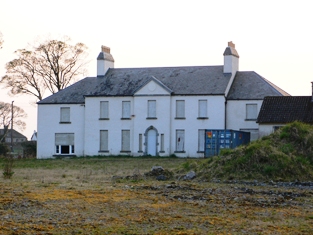
|
| Athlacca House | A residence of the Ormsby family in the 18th century. On the first Ordnance Survey map the house is marked "in ruins". Also known as Old Court. | |
| Athlunkard House | Hamilton Jackson held what was described as a steward's house from Colonel George Wyndham at the time of Griffith's Valuation. It was valued at £14. Weir also describes a house known as Clare Cottage in Athlunkard. | |
| Atlantic Lodge | The home of a branch of the Studdert family of Clonderalaw in the mid 19th century held from the Marquis of Conyngham. It was the main residence of Jonas Studdert and was valued at £18 + in the early 1850s. The house is labelled Atlantic House on the 25-inch map of the 1890s and a coastguard station was built to the rear. Modern housing has now been built at the site. | |
| Atteville | Both Leet and Lewis indicate that Atteville was the seat of the Knott family with William residing there in 1814. At the time of Griffith's Valuation the property was in the possession of William Phibbs. It is described as a "herd's house" and was valued at almost £2. | |
| Atticorra | Brabazon Sharpe was leasing a property valued £20, including a mill, to Patrick Harney. This property was situated at Atticora, barony of Moycarn. A mill is shown at this location on the 1st edition OS map. The ruins of the buildings are still visible at the site. |
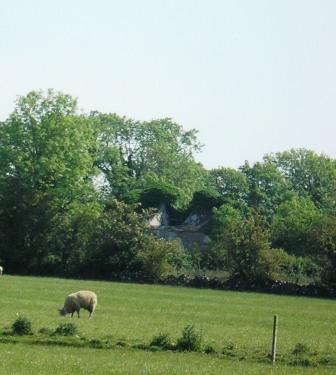
|
| Attyflin | A mid 18th century house, Wilson refers to Atthyflin as the seat of the Westropps in 1786. The house was occupied by Hamilton Jackson at the time of Griffith's Valuation and held from John Westropp. The buildings were valued at £50. In 1943 this house was owned by Mrs A. White, nee Massy Westropp and its contents at this time are described by the Irish Tourist Association surveyor. Home of a branch of the Hewson family in the 20th century. It is still extant. |

|
| Attymon House | At the time of Griffith's Valuation this house was occupied by Mary Broderick, who later married Lord Dunsandle. It was then valued at £8. In 2008 the current house at this site was offered for sale. The sale details state that it was originally built as a hunting lodge but later extended. See Irish Times 22 May 2008. |

|
| Aubawn | Described by Mulligan as a ‘medium-size Late Georgian villa’. In 1814 Henry Lenauze was resident at Aubawn, Killeshanadra and Lewis records Aughabawn as the home of the Reverend J. Vernon. The Upton Papers (RIA) contain the will of M. Story of Aubawn, 1817. By the mid-1850s Richard Fox was the owner and occupier of Aubawn, with a rateable valuation of £21. In 1876 the address of George De La Poer Beresford, owner of 570 acres in the county, was Auburn, Killeshandra. Douglas G. Adams occupied the house in 1901, holding it from Beresford while a land steward William Gordon and his family were resident in 1911. This house has been renovated and modernised. |
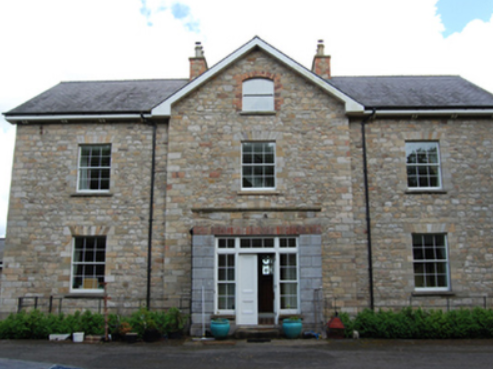
|
| Auburn | Auburn - Detached five-bay two-storey over raised basement house, built or rebuilt in the early 19th century (boi) This house takes its name from the Goldsmith Poem ‘The Deserted Village’, which was apparently inspired by the countryside surrounding this property where Goldsmith grew up as a boy. Auburn House was reputedly remodeled in the early nineteenth-century by John Hogan, whose father, a solicitor, acquired the property and estate from the Naper Family (of Loughcrew, Oldcastle, Co. Meath) in settlement of legal costs. J Hogan was the occupant in 1837. It was later sold to William Henry Daniel c.1848 and later to G.A.G. Adamson in 1864. In 1906 the buildings were valued at £34 and Charles G Adamson was the occupier. The Adamson family continued to reside at Auburn until about 1980. The house is now a ruin. |
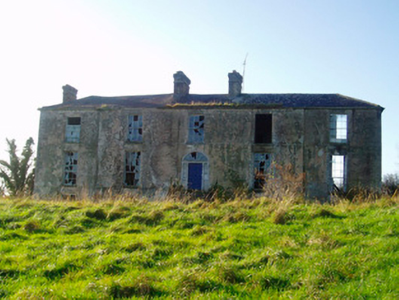
|
| Auburn House | Auburn House located on the eastern outskirts of Athlone town is described by O’Brien as a late 18th century, two-storey, three bay house built by James Sproule about 1790. Occupied by the Bruce family of Gore House, Northgate Street, for about fifteen years before they immigrated to Australia. W S Bruce was resident in 1837. At the time of Griffith’s Valuation (publ. 1854) Laurence or Lorenzo Dundas was resident holding the house valued at £22 from George Mechum. Various persons occupied this house in the following years including the Mahon and Browne families in the 20th century. Sold to the state in the 1960s it became a ruin and is now demolished. The Athlone Regional College now occupies the site. | |
| Aughavoher House | Summer residence of the Gores of Derrymore, held by Edward A. Gore in fee at the time of Griffith's Valuation. It is no longer extant. | |
| Aughrim | At the time of Griffith's Valuation, Rev. R. Fitzgerald was leasing this property from the Blacker estate when it was valued at £6 and part of a holding of 600 acres. It is described as a Steward's house. Farm buildings still exist at the site. | |
| Aughrim | A home of a branch of the Goold family occupied by George Goold in the early 1850s and held from Henry V. Wrixon. The buildings were valued at £13.10 shillings. George Goold still lived here in the 1870s. The house is occupied. | |
| Aughrim Castle | The 1st edition Ordnance Survey map indicates a house located a short distance to the north of the site of Aughrim Castle. Lewis records Aughrim Castle as the seat of R. Stanford in 1837. In 1786 Wilson mentions "Aghrim, the seat of the Rev. Mr. Ward". At the time of Griffith's Valuation, Robert Standord was leasing a property from the Handy estate, valued at £15, and which included a mill. It is no longer extant. | |
| Aughry House | Aughry House built after the publication of the First Edition Ordnance Survey map. At the time of Griffith's Valuation it was owned and occupied by Charles T. Ward and was valued at £13. Aughry Castle (in ruins) is visible nearby on the 1st edition map. This may be the property referred to in 1786 by Wilson as the seat of Mr. Nesbit. Elaborate modern entrance gates identify Aughry House which appears to be close to the site of the original. | |
| Avena | McTernan indicates that this house was originally owned by Robert Culbertson, mill owner of Ballysadare. His property was purchased in the Landed Estates Court in the 1860s by Messers. Middleton and Pollexfen and became a regular residence of Wiliam Middleton. It is still extant and occupied. |
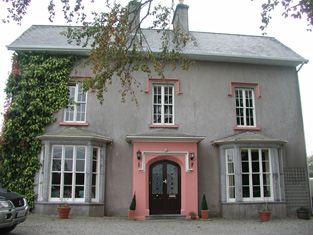
|
| Avena House | Avena House is associated with the extensive mill owning complex that formerly existed in Ballisadare. It was once part of the property of the Pollexfen family. |

|
| Ayle | The home of a branch of the Macnamara family in the 18th and 19th centuries. It was advertised for sale in 1850 and Griffith's Valuation records Joseph Browne as the occupier. He held the property in fee, the buildings were valued at £14. Weir writes that the original house was demolished and that the house now standing which was occupied by the Walshes, agents to the Macnamaras, was uninhabited. see http://www.thisoldhouse.com/toh/article/0,,568230,00.html | |
| Baggotstown | The seat of the Bourchier family in the 18th and 19th centuries, valued at £32+ in 1906. The Irish Tourist Association surveyor writes in 1942 that this house was built in 1745 (keystone) and had lately been acquired by Mr T. Mitchell, a solicitor. This house has recently been renovated. |
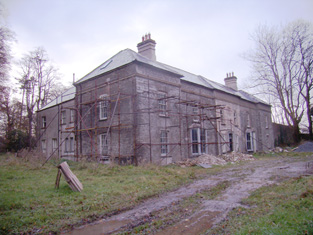
|
| Bahaghs Lodge | At the time of Griffith's Valuation, a property here appears to have been leased from Charles O'Connell to the Cahersiveen Board of Guardians for use as an auxiliary workhouse. Bahaghs Lodge is labelled as "in ruins" on the 1st edition Ordnance Survey map but is shown as "Bahaghs Lodge" on the later 25-inch Ordnance Survey map. Bary notes that Charles O'Connell is said to have built it in 1833 around the time of his marriage to Katherine O'Connell, daughter of the Liberator. The family were later obliged to leave the property due to financial difficulties. Portions of the ruin now remains. |

|
| Bailieborough Castle/Lisgar Castle | A Scottish planter named William Bailie built a castle here in the early 17th century. It passed into the possession of a number of prominent families Hamilton, Stewart and Corry until it was sold to Colonel William Young in 1814. His son, Sir John Young, later created 1st Baron Lisgar, built a new house on the site in the 1860s. At the end of the 19th century the house was sold to Sir Henry Cochrane and in 1915 to the Marist Brothers of Athlone. Badly damaged by fire in 1918 but reconstructed, the house was eventually demolished in 1942. | |
| Bailieborough Castle/Lisgar Castle | A Scottish planter named William Bailie built a castle here in the early 17th century. It passed into the possession of a number of prominent families Hamilton, Stewart and Corry until it was sold to Colonel William Young in 1814. His son, Sir John Young, later created 1st Baron Lisgar, built a new house on the site in the 1860s. At the end of the 19th century the house was sold to Sir Henry Cochrane and in 1915 to the Marist Brothers of Athlone. Badly damaged by fire in 1918 but reconstructed, the house was eventually demolished in 1942. For image see https://www.archiseek.com/ | |
| Baily Ville | Situated on the Neville estate this house was built by the Baily family in the mid 19th century. It is marked on the first Ordnance Survey map, circa 1840. By the 1870s Richard Gregg was living in the house which was then known as Oakville. He owned 405 acres in county Cork. Hajba writes that Gregg sold his interest in the property to the Fitzpatricks in the 1880s and this family was still in residence in the early 21st century. | |
| Ballagh | In 1814 James O'Connor was residing at Ballagh. Described as a good dwelling house at the time of the first Ordnance Survey. Occupied by Denis O'Conor in the 1850s, held from Theobald Dillon and valued at £6. In 1906 James D. O'Connor occupied Ballagh, valued at £17. It is no longer extant. | |
| Ballagh | The residence of John Kelly in 1814. At the time of Griffith's Valuation, there is no house with a substantial valuation in the townland, which was the property of "Bernard Kelly, a minor, in chancery". |

